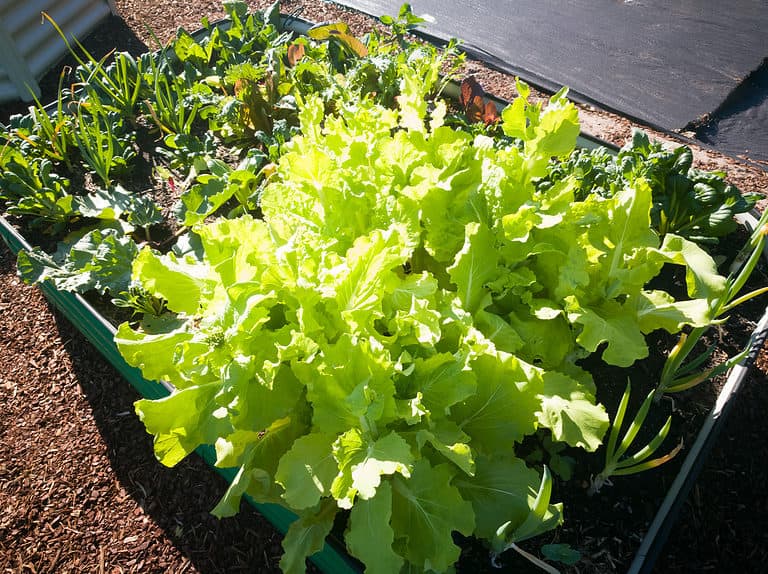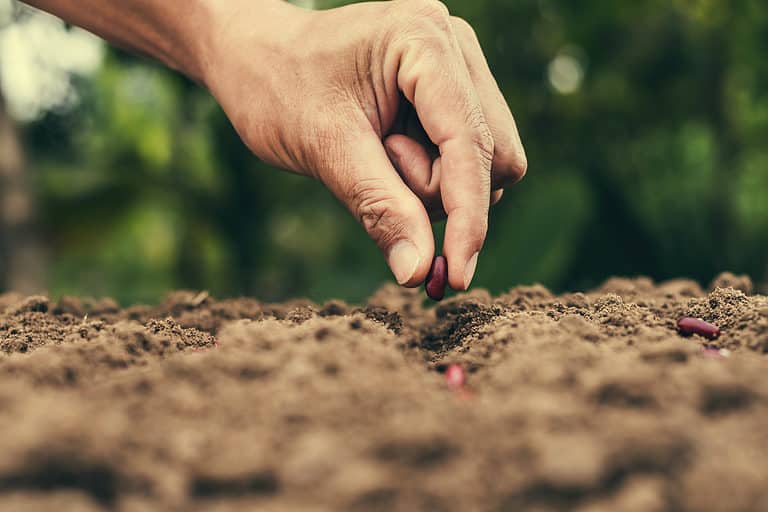37 Simple Tips To Live a More Sustainable Lifestyle
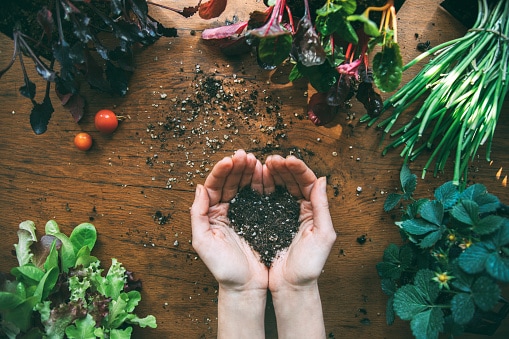
I’m not a tree hugger. I’m not even a regular hugger (Ask my wife). But I do care about the environment. And I think we all need to do our part to make this planet a better place. So, what can you do to live a more sustainable lifestyle? Well, that’s what these ideas are all about! We’ll talk about everything from recycling and composting to reducing your energy consumption and eating off your own food.
You also don’t need to live off the grid on a 50 acre homestead. We can use the patio of a condo or convert a portion of a small yard or simply make a few lifestyle changes. We focus on small steps to do your part to making our world and communities a better place to live.
Oh, and one more thing. If you’re looking for a blog that’s going to tell you how to live your life, this isn’t it. I’m not going to lay too much of a guilt trip or tell you how to live your life. I’m just going to give you some ideas about green living and a more sustainable lifestyle. I’ll let you decide what’s best for you.
So, sit back, relax, and enjoy the ride! We’re going to list out some ideas on how to live a sustainable lifestyle!
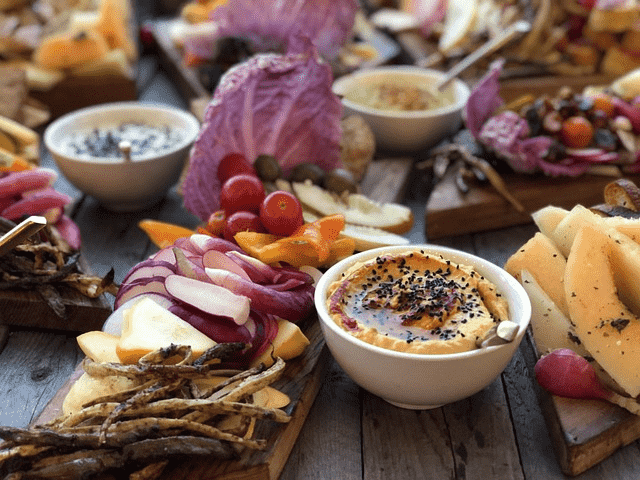
What Are the Best Ideas For Food?
1. Plant a garden.
Gardening can be as easy or as difficult as you want to make it. But from personal experience, the fulfillment one gets from growing a tomato or pepper for the first time can’t be beat and will hook you for years to come.
- A garden can offset your grocery bill. Just growing a few herbs can save you significant money at the grocery store.
A garden can be relaxing to work. Some get great satisfaction in the simple process of working a garden and even find weeding a good way to clear your mind
Organic home grown food is healthy. You have full control over what goes on your vegetables. Organic garden will reduce the chemicals you put in your body every day.
Garden vegetables increase variety. If you go beyond the big box stores to a good seed source, you will find vegetables that have a different flavor and consistency than anything you have ever bought.
Here are some fun ways to get started gardening:
Start small with a container tomato plant on a patio.
- Grow an indoor garden with a hydroponic system.
Install a metal raised bed to get some dimension to your yard and an easy way to start a garden.
Join a community garden to learn from your neighbors and share in each others passion.
Just a few thousand square feet is enough to grow most of your own vegetables if properly planted.
Go hog wild in the back yard by creating a tapestry of raised beds. This offers your family food and a new way for your family to play. Read more on the no grass movement.
2. Buy from local farmers and choosing organic and fair trade products.
Supporting local organic farms is a great way to improve your health, the environment, and the economy. Here are some reasons why you should support local organic farms:
Organic farms are better for the environment. They use less water, produce less pollution, reduce your carbon footprint, and create healthier soil.
Organic farms are better for your health. Organic food is free of pesticides, herbicides, and other chemicals that can harm your health.
Organic farms are better for the economy. They create jobs, support local businesses, and keep money in the community.
Here are some fun ways to get started supporting local organic farms:
Join a CSA (Community Supported Agriculture) program. CSAs allow you to purchase a share of a farm’s harvest, which you can pick up each week.
Visit your local farmers market. Farmers markets are a great place to find fresh, local produce.
Buy organic food whenever possible. Organic food is available at most grocery stores, and it’s often on sale. Many stores also source from local farms.
Eat out at restaurants that support local organic farms. Many restaurants are now using local, organic ingredients in their dishes.
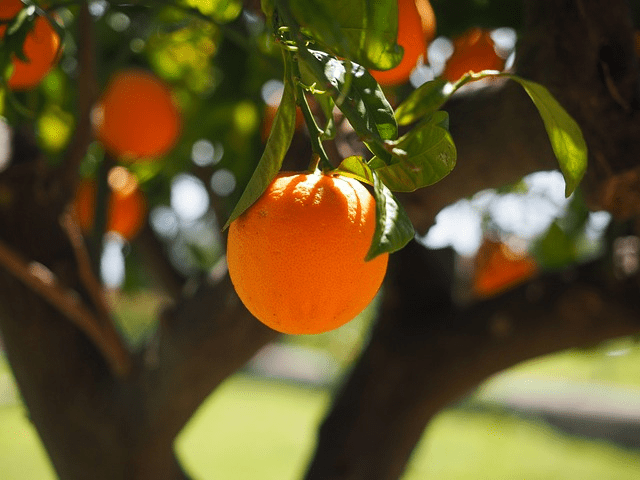
3. Plant trees.
Planting fruit trees is a great way to add beauty and value to your home, enjoy fresh fruit, and provide food and shelter for wildlife. Here are some reasons why you should plant fruit trees and grow your own food:
Fruit trees are beautiful. They add color and interest to your yard and can provide shade and privacy.
Fruit trees are delicious. There’s nothing like biting into a fresh, juicy peach or apple that you’ve grown yourself.
Fruit trees are healthy. They provide fresh fruit that is free of pesticides and other chemicals.
Fruit trees are sustainable. They require little maintenance and can live for many years.
Fruit trees are fun. They provide a great opportunity to get outside and enjoy nature.
Here are some fun ways to get started planting fruit trees:
Plant a fruit tree in your yard. This is the most traditional way to plant a fruit tree, and it’s a great way to enjoy fresh fruit.
Plant a fruit tree in a container. Container-grown fruit trees are perfect for small spaces, and they’re easy to move around.
Plant a fruit tree in a community garden. Community gardens are a great way to meet your neighbors and get involved in your community.
Plant a fruit tree in a park. This is a great way to give back to your community and provide food and shelter for wildlife.
Grow your own vegetables in a backyard garden
4. Buy local and organic food whenever possible.
Little more represents a sustainable lifestyle than how one chooses and eats food. Buy local and eating organic in-season food. Organic foods are grown without the use of synthetic pesticides, herbicides, or fertilizers. They are also processed without the use of artificial colors, flavors, or preservatives. Organic foods are often considered to be more nutritious than conventional foods because they are higher in vitamins, minerals, and antioxidants.
Studies have shown that eating organic foods can reduce your risk of cancer, heart disease, and other chronic diseases. Organic foods are also better for the environment because they reduce pollution and conserve water.
There are many ways to get started eating organic foods. You can start by buying organic produce at your local grocery store. You can also find organic foods at farmers markets, natural food stores, and online.
Here are some fun ways to get started:
Plant an organic garden.
Join an organic CSA (Community Supported Agriculture).
Go to an organic farmers market.
Start a weekly organic meal planning routine.
Try some new organic recipes.
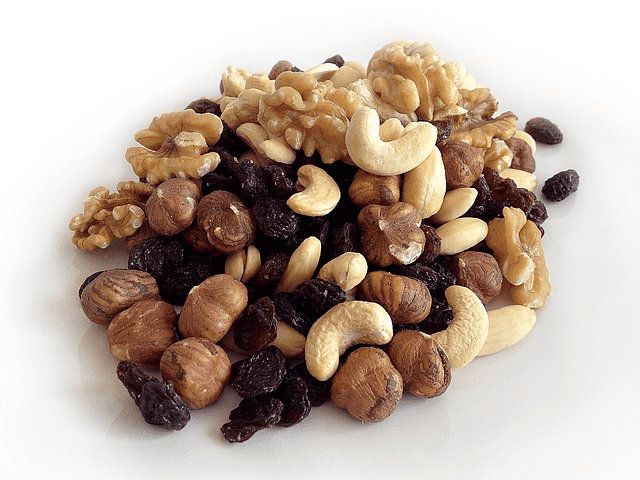
5. Eat less processed food and more whole foods.
Processed foods are those that have been altered in some way from their natural state. This can include things like adding artificial flavors, colors, or preservatives, or removing nutrients. Processed foods are often high in calories, sugar, and unhealthy fats. They can also be low in fiber and other nutrients.
Eating too many processed foods can lead to weight gain, diabetes, and other health problems. It can also make it difficult to get the nutrients you need.
Here are some fun ways to get started eating less processed foods:
Cook more meals at home from scratch.
Limit the amount of fast food you eat.
Choose whole foods over processed foods whenever possible.
Read food labels carefully and avoid foods with a lot of artificial ingredients.
Try new recipes that use whole, unprocessed ingredients.
You can also try to make your own processed foods at home. This is a great way to control what goes into your food and to make sure that it is healthy and nutritious.
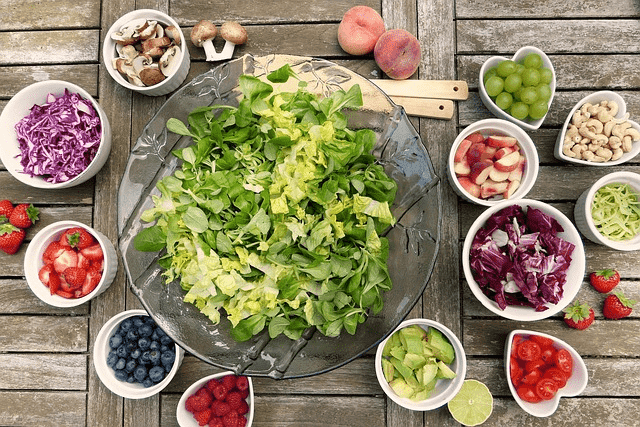
6. Eat less meat.
I do love a good steak. But even a meat eater like me could stand a few salads a couple of nights a week. And not much makes me more proud that a meal prepared entirely from my own garden. Eating less meat can benefit your health, the environment, and animals. Here are some reasons why you should eat less meat:
Meat consumption is linked to a number of chronic diseases, including heart disease, stroke, and some types of cancer.
Meat production is a major contributor to climate change and environmental degradation.
Animals used for meat production are often raised in cruel and inhumane conditions.
There are many ways to get started eating less meat. You can start by choosing to eat meatless meals a few times a week. You can also try substituting meat with other sources of protein, such as beans, nuts, or tofu.
Here are some fun ways to get started:
Try a meatless Monday challenge.
Sign up for a vegetarian or vegan cooking class.
Explore new cuisines that are based on plant-based foods.
Join a support group or online community of people who are trying to eat less meat.
7. Reduce your consumption of animal products.
Here are some reasons why you should reduce your consumption of animal products:
Animal agriculture is a major contributor to climate change.
Animal agriculture is a leading cause of deforestation.
Animal agriculture is a leading cause of water pollution.
Animal agriculture is a leading cause of air pollution.
Animal agriculture is a leading cause of land degradation.
Animal agriculture is a leading cause of species extinction.
Here are some fun ways to get started:
Try a vegan or vegetarian diet.
Eat less meat and more plant-based foods.
Choose free-range, organic, or sustainably-raised animal products.
Buy in bulk and cook from scratch.
Avoid processed foods.
Support local farmers and businesses.
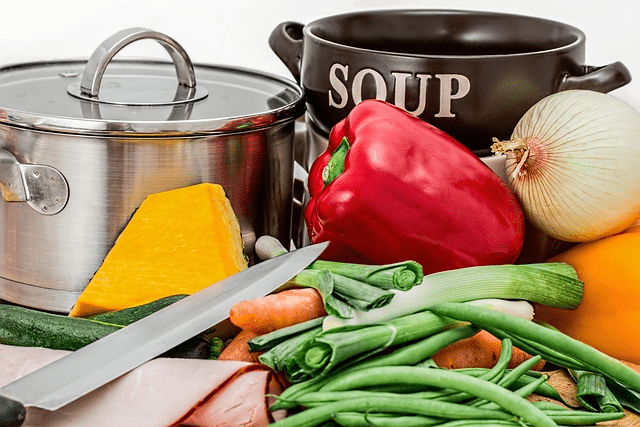
8. Cook more at home.
Cooking at homeis a great way to save money, eat healthier, and bond with family and friends. While cooking at home can seem daunting, it doesn’t have to be. With a little planning and effort, you can create delicious and nutritious meals that are better for your budget and your health.
According to a study by the National Center for Biotechnology Information, people who cook at home consume fewer calories and less fat than those who eat out.
A study by the University of Minnesota found that families who cook together have closer relationships and better communication.
A study by the University of Michigan found that cooking at home can help reduce stress levels.
Here are some fun ways to get started cooking at home:
Take a cooking class.
Join a cooking club.
Watch cooking videos online.
Read cooking magazines.
Find new recipes to try.
Get creative with your cooking.

What are the Best Ideas for Conservation?
9. Reduce your energy consumption.
Reducing your energy consumption can save you money and help the environment. Here are some tips on how to get started:
Statistics:
According to the U.S. Energy Information Administration, the average household consumes 914 kWh of electricity per month.
The average household can save up to $200 per year by reducing their energy consumption.
Reducing energy consumption can help reduce greenhouse gas emissions.
Fun Ways to Get Started:
Install a smart thermostat.
Replace incandescent light bulbs with LED bulbs.
Unplug appliances when they’re not in use.
Take shorter showers.
Install insulation in your home.
Plant trees around your home.
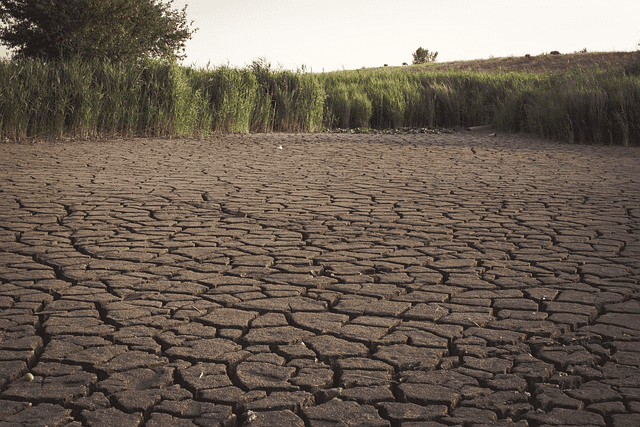
10. Save water.
Water is a precious resource, and we should all do our part to conserve it. Here are some tips on how to save water in your daily life:
Statistics:
The average person uses 100 gallons of water per day.
The average household can save up to 1,000 gallons of water per month by making simple changes.
Water conservation can help reduce the risk of drought and water shortages.
Fun Ways to Get Started:
Install low-flow showerheads and faucets.
Fix any leaks in your home.
Water your plants in the early morning or evening.
Take shorter showers.
Install a rainwater collection system.
Plant drought-tolerant plants in your garden.

11. Install solar panels or other renewable energy sources.
Installing solar panels and other renewable energy sources can help you save money on your energy bills, reduce your carbon footprint, and increase your home’s value. Here are some tips on how to get started:
Statistics:
The average cost of installing solar panels is $20,000.
The average household can save up to $2,000 per year on their energy bills by installing solar panels.
Solar panels can increase the value of your home by up to $20,000.
Ways to Get Started:
Hire a professional installer.
Check out government incentives and rebates.
Compare quotes from multiple installers.
Start small and expand as you go.
12. Use energy-efficient appliances and electronics.
Using energy-efficient appliances and electronics can help you save money on your energy bills, reduce your carbon footprint, and increase the lifespan of your appliances. Here are some tips on how to get started:
Statistics:
The average household spends $2,000 per year on energy bills.
The average household can save up to 20-50% per year by using energy-efficient appliances and electronics.
Energy-efficient appliances and electronics can last up to twice as long as their less efficient counterparts.
Fun Ways to Get Started:
Buy new appliances and electronics that are Energy Star certified.
Unplug appliances and electronics when they are not in use.
Use Energy efficient light bulbs
Recycle old appliances and electronics.
13. Insulate your home properly
Insulating your home can help you save money on your energy bills, reduce your carbon footprint, and make your home more comfortable. Here are some tips on how to get started:
Statistics:
The average household spends $2,000 per year on energy bills.
The average household can save up to 11% of their energy costs per year by insulating their home.
Insulating your home can help reduce your carbon footprint by up to 10%.
Fun Ways to Get Started:
Hire a professional insulation contractor.
Do it yourself.
Check out government incentives and rebates.
Compare quotes from multiple contractors.
Start small and expand as you go.
There are many types of insulation, so do your research to find the best option for your home.
You can also insulate your attic, walls, and basement.
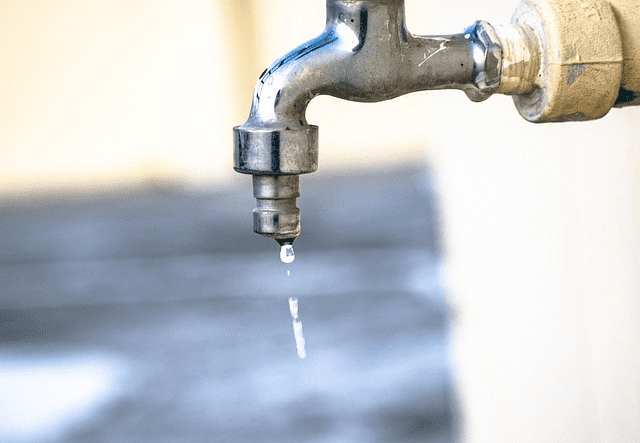
14. Fix leaky faucets and toilets.
Replacing leaky faucets and toilets can help you save water and money, and it’s not as difficult as you might think. Here are some tips on how to get started:
Statistics:
The average household leaks 100 gallons of water per day.
Replacing a leaky faucet can save you up to 1,000 gallons of water per year.
Replacing a leaky toilet can save you up to 10,000 gallons of water per year.
Replacing leaky faucets and toilets is a great way to save water and money. It’s also a relatively easy project that can be done by most homeowners.
15. Use water-saving devices such as low-flow showerheads and toilets.
Water saving devices can help you save water and money, and they’re a great way to reduce your environmental impact. Here are some tips on how to get started:
Statistics:
The average household uses 100 gallons of water per day.
Water saving devices can save you up to 20% on your water bill.
Water saving devices can reduce your water usage by up to 50%.
Fun Ways to Get Started:
Install low-flow showerheads and faucets.
Install a low flow toilets
Get a toilet with one of those cool little flush/big flush buttons.
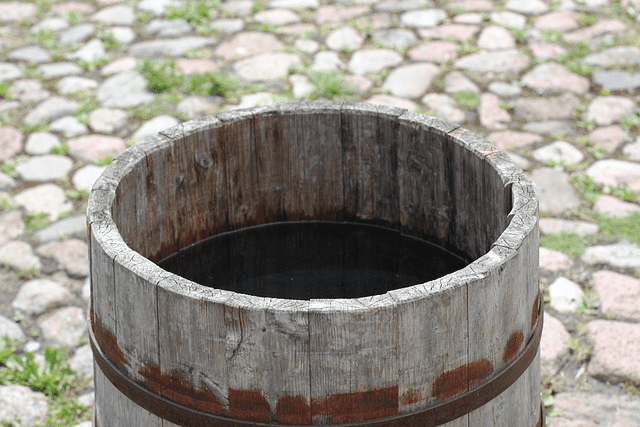
16. Install a rain barrel
Rain barrels are a great way to save water and money, and they’re a relatively easy project that can be done by most homeowners. Here are some tips on how to get started:
Statistics:
The average household uses 100 gallons of water per day.
Rain barrels can save you up to 1,000 gallons of water per year.
Rain barrels can reduce your water usage by up to 50%.
Fun Ways to Get Started:
Install a rain barrel system.
Build a rain barrel from a kit.
Buy a rain barrel from a store.
Install a rain barrel on your downspout.
Install a rain barrel on your roof.
17. Install a greywater system.
Greywater systems are a great way to save water and money, and they’re a relatively easy project that can be done by most homeowners. Here are some tips on how to get started:
Statistics:
The average household uses 100 gallons of water per day.
Greywater systems can save you up to 1,000 gallons of water per year.
Greywater systems can reduce your water usage by up to 50%.
Fun Ways to Get Started:
Install a greywater system in your home.
Install a greywater system in your garden.
Install a greywater system in your community.
Install a greywater system in your school.
Install a greywater system in your workplace.
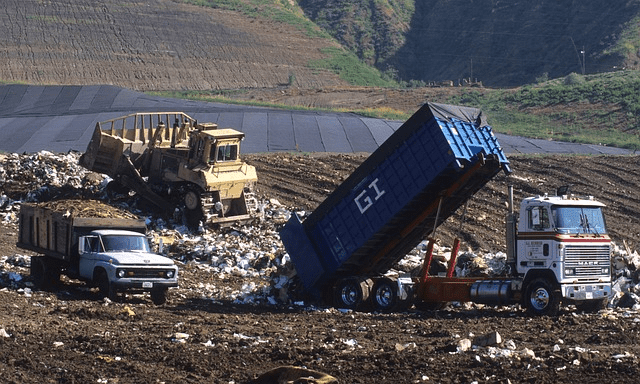
What are the Best Ideas for Reducing Waste?
18. Visit a landfill
Landfills are a great way to learn about waste and how it’s disposed of. They’re also a great place to find treasures, like antiques and collectibles. Here are some tips on how to get started:
Statistics:
The average American produces 4.5 pounds of trash per day.
Landfills are the largest source of methane gas in the United States.
Landfills are a major source of pollution.
Fun Ways to Get Started:
Visit a landfill near you.
Volunteer at a landfill.
Learn about the history of landfills.
Learn about the environmental impact of landfills.
Learn about the future of landfills.
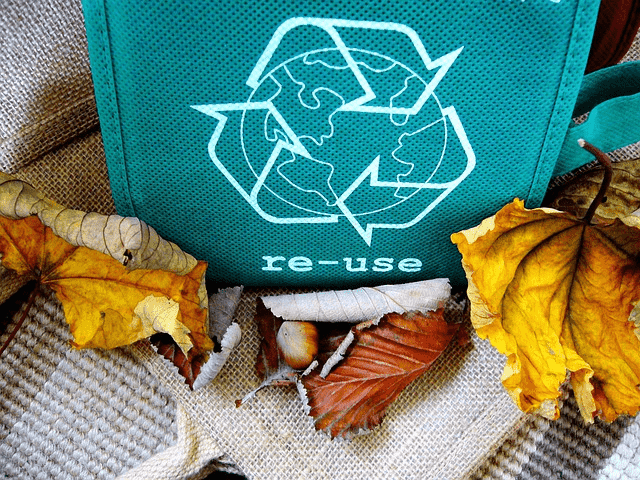
19. Recycle, Recycle, Recycle.
Recycling is a great way to save the environment and reduce your carbon footprint. Here are some tips on how to get started:
Statistics:
Americans generate over 250 million tons of waste every year.
Only 35% of that waste is recycled.
Recycling reduces greenhouse gas emissions by 70%.
Recycling saves energy.
Recycling creates jobs.
Fun Ways to Get Started:
Burn your paper and use it in the garden
Put food scraps in your garden
Use plastic bottles as garden feeders and bird feeders.
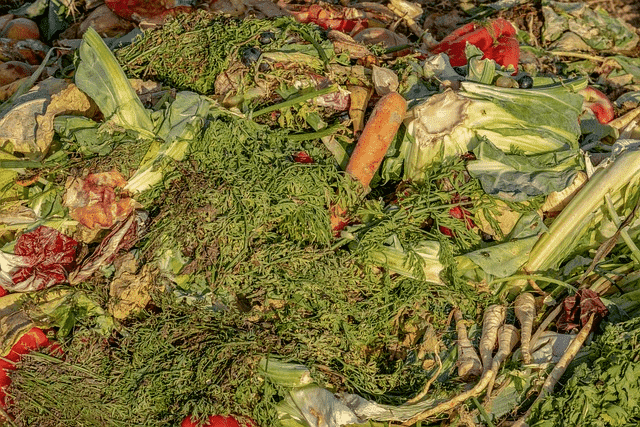
20. Compost your food waste.
Composting food waste is a great way to reduce your carbon footprint and save the environment. Here are some tips on how to get started:
Statistics:
Americans generate over 250 million tons of waste every year.
Only 35% of that waste is recycled.
Food waste is the largest component of that waste.
Food waste in landfills releases methane, a greenhouse gas.
Composting food waste reduces methane emissions.
Composting food waste creates nutrient-rich soil.
Composting food waste is a great way to save money.
Fun Ways to Get Started:
Create a pile of food and leaves in back yard and turn it.
Get a nifty eco friendly composting device.
Buy a compost barrel.
Feed it to your pets and animals.
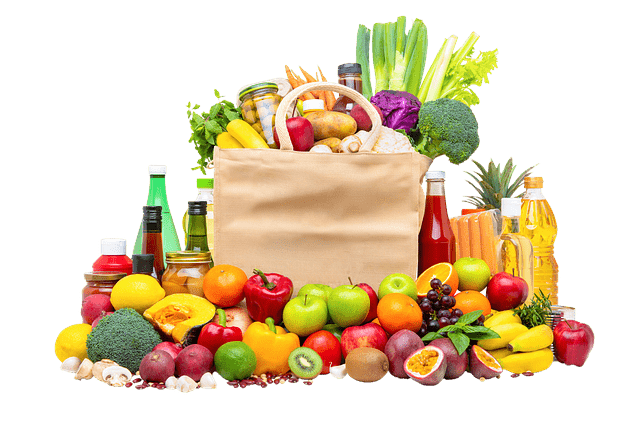
22. Use reusable bags when you go shopping.
Using reusable bags when shopping is a great way to save the environment and reduce your carbon footprint. Here are some tips on how to get started:
Statistics:
Americans use 500 billion plastic bags every year.
Only 1% of those bags are recycled.
The rest end up in landfills or as litter.
Plastic bags take 1,000 years to decompose.
Reusable bags are made from recycled materials.
Reusable bags are durable and can be used over and over again.
Fun Ways to Get Started:
Buy reusable bags.
Make your own reusable bags.
Use reusable bags when you go shopping.
Encourage your friends and family to use reusable bags.
Spread the word about the benefits of reusable bags.
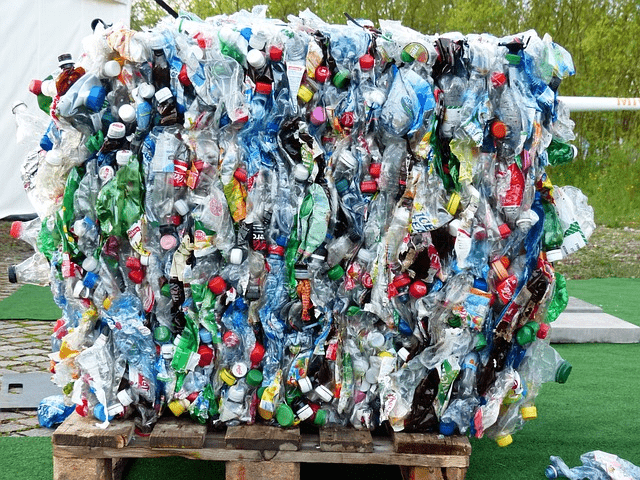
23. Reduce your waste by refusing single-use items.
Single-use items are a major source of pollution and waste. Reducing our use of these items is a great way to help the environment. Here are some tips on how to get started:
Statistics:
Americans use more than 430 Billion single-use food/drink containers
Plastic straws, cups, plates, and other single use plastics waste will take 200-800 years to decompose.
Only 10% of single-use items are recycled.
Fun Ways to Get Started:
Join the Reduce Single Use Plastics Challenge
Buy reusable bags.
Make your own reusable bags.
Drink straight from a glass.
Reduce plastic bottled water by having your reusable bottle.
Reuse your to-go containers.
Here are some other examples of single-use items and plastic waste that we should try to avoid:
Plastic straws
Plastic cutlery
Plastic cups
Plastic water bottles
Plastic plates
Plastic bags
Styrofoam cups
Styrofoam plates
Styrofoam packaging
We can all do our part to reduce our use of single-use items and help make the world a cleaner, healthier place.
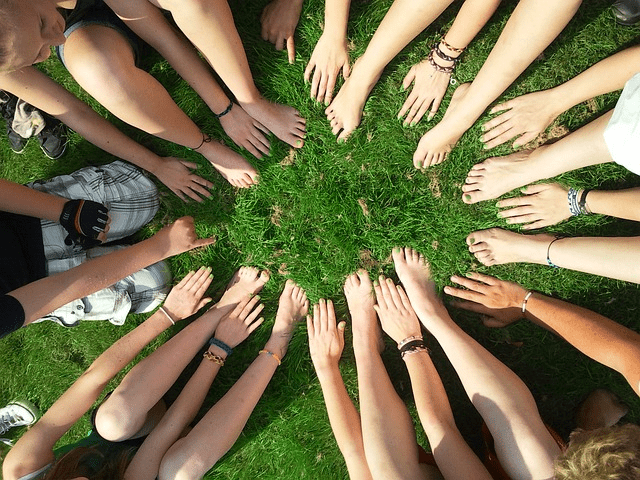
What are the Best Ideas for Supporting a Community?
24. Support sustainable businesses.
Sustainable businesses are those that operate in a way that minimizes their impact on the environment. They often use sustainable practices, such as recycling and composting, and they often source their materials from sustainable sources. Supporting sustainable businesses is a great way to help the environment and reduce your carbon footprint. Here are some tips on how to get started:
Statistics:
Americans spend over $2 trillion every year on goods and services.
Only a fraction of that money goes to sustainable businesses.
Sustainable businesses are often more expensive than their non-sustainable counterparts.
- Is Solar Worth It in 2023? A Comprehensive Guide
Sustainable businesses are better for the environment and they often have better working conditions.
Fun Ways to Get Started:
Buy sustainable products.
Eat at sustainable restaurants.
Shop at sustainable stores.
Support sustainable businesses on social media.
Spread the word about the benefits of sustainable businesses.
25. Volunteer for environmental causes.
Volunteering for environmental causes is a great way to help the environment and make a difference. Volunteering does a few things for the good of the individual. It helps build connections with the world around you, helps others, gets you on your feet, opens your heart, and keeps a sustainable lifestyle in focus at all times. Here are some tips on how to get started:
Statistics:
Americans generate over 250 million tons of waste every year.
Only 35% of that waste is recycled.
The rest ends up in landfills or as litter.
Volunteering for environmental causes can help reduce waste and pollution.
It can also help protect wildlife and natural habitats.
Volunteering for environmental causes is a great way to meet new people and make friends.
Fun Ways to Get Started:
Volunteer at a local recycling center.
Volunteer at a local environmental organization.
Volunteer at a local park or nature preserve.
Volunteer at a local beach or river cleanup.
Volunteer to plant trees or flowers in your community.

26. Talk to your friends and family about sustainability.
Talking about sustainability with your friends and family is a great way to spread the word about the importance of protecting our planet. It can also help you learn more about sustainability and how you can make a difference. Here are some tips on how to get started:
Statistics:
Americans generate over 250 million tons of waste every year.
Only 35% of that waste is recycled.
The rest ends up in landfills or as litter.
Talking about sustainability can help reduce waste and pollution.
It can also help protect wildlife and natural habitats.
Talking about sustainability is a great way to meet new people and make friends.
Fun Ways to Get Started
Talk about sustainability at home.
Talk about sustainability at school.
Talk about sustainability at work.
Talk about sustainability in your community.
Talk about sustainability on social media.
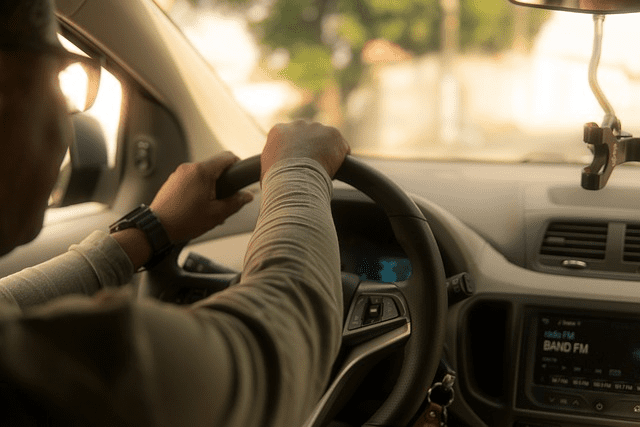
27. Use public transport where possible.
Using public transport is a great way to save money, reduce your carbon footprint, and avoid traffic congestion. Here are some tips on how to get started:
Statistics:
Americans spend over $1 trillion on transportation every year.
Most of that money goes to car payments, insurance, and gas.
Using public transportation can save you up to $100 per month.
Using public transportation can reduce your carbon footprint by up to 50%.
Using public transportation can help reduce traffic congestion.
Fun Ways to Get Started:
Take a bus to work.
Take a train to school.
Take a subway to the grocery store.
Take a ferry to the beach.
Use a ride-sharing service like Uber or Lyft.
28. Volunteer for environmental organizations or participate in beach or river clean-ups.
Volunteering for environmental organizations or participating in beach or river clean-ups is a great way to help the environment and make a difference. If you have a local place to spend time near the water, it is a wonderful way to get out and enjoy nature. While there pick up some trash and glass to give the area and your community back its glory. A sustainable lifestyle should incorporate you spending a few minutes a day trying to make the world a better place. Here are some tips on how to get started:
Statistics:
Volunteering for environmental organizations can help reduce waste and pollution.
It can also help protect wildlife and natural habitats.
Volunteering for environmental organizations is a great way to meet new people and make friends.
Fun Ways to Get Started:
Volunteer at a local recycling center.
Volunteer at a local environmental organization.
Volunteer at a local park or nature preserve.
Volunteer at a local beach or river cleanup.
Volunteer to plant trees or flowers in your community.
Participate in a beach or river cleanup.

What are the Best Ideas for Self Improvement?
29. Educate yourself about sustainability.
Educating yourself about sustainability is a great way to help the environment and make a difference. Like any job or hobby, the more you learn about how to incorporate a more sustainable lifestyle, the more you will likely connect with the ideas and practices. Here are some tips on how to get started:
Statistics:
Educating yourself about sustainability is a great way to meet new people and make friends.
20% of the world’s energy is used to produce cement.
15% of the world’s forests have been cleared for agriculture.
10% of the world’s population does not have access to clean water.
5% of the world’s population does not have access to electricity.
4% of the world’s population does not have access to adequate sanitation.
3% of the world’s population does not have access to adequate housing.
2% of the world’s population does not have access to adequate food.
1% of the world’s population does not have access to adequate healthcare.
These statistics show that there is still much work to be done in order to achieve sustainability. We need to reduce our consumption of resources, improve our infrastructure, and invest in technologies that will help us to live more sustainably.
Fun Ways to Get Started:
Read books and articles about sustainability.
Watch documentaries about sustainability.
Follow sustainability experts on social media.
Attend a sustainability conference.
Talk to your friends and family about sustainability.

30. Walk or cycle more and drive less.
Walking and cycling are great ways to get around town and get some exercise. They’re also good for the environment and can help you save money on gas. A quick jaunt around time or through the country side is a great way to incorporate exercise and peace in your sustainable lifestyle. Here are some tips on how to get started:
Statistics:
Americans drive an average of 13,500 miles per year.
That’s enough to drive around the Earth 5 times!
Walking and cycling can help reduce traffic congestion and pollution.
They can also help you stay healthy and fit.
Walking for just 30 minutes a day can reduce your risk of heart disease, stroke, and diabetes.
Cycling for just 20 minutes a day can help you lose weight and improve your fitness.
Fun Ways to Get Started:
Walk or cycle to work or school.
Walk or cycle to the grocery store.
Walk or cycle to the park.
Walk or cycle to the library.
Walk or cycle to the gym.
Join a cycling club or walking group.
Take a bike tour of your city.
Take a walking tour of your city.
31. Share your knowledge with others.
Sharing your knowledge of living a more sustainable lifestyle with others is a great way to help the environment and make a difference. Here are some tips on how to get started:
Fun Ways to Get Started:
Write a blog post about living a more sustainable lifestyle.
Give a presentation about living a more sustainable lifestyle.
Start or join a sustainability club at your school or workplace.
Organize a sustainability lifestyle project event in your community.
Talk to your friends and family about living a more sustainable life.
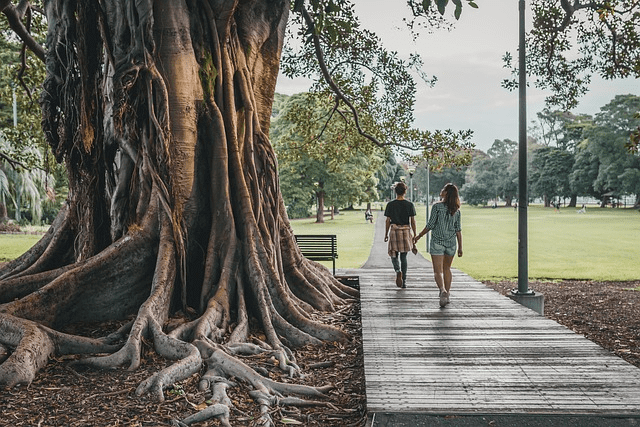
More about Living a More Sustainably Lifestyle:
What is Sustainable Living?
Living a sustainable lifestyle is a choice to live in a way that causes less harm to the environment. Sustainability is the ability to exist or maintain a certain level of existence without causing harm to the environment. There are many ways to live a more sustainable lifestyle, and it is important to find what works best for you.
Here are some tips on how to live a more sustainable lifestyle:
Recycle and compost.
Reduce your consumption of resources, such as water and energy.
Use sustainable products, such as fair trade coffee and organic cotton clothing.
Support sustainable businesses.
Get involved in your community.
Educate yourself about sustainability.
Living a sustainable lifestyle is a journey, not a destination. It is a process of learning and growing, and it is important to be patient and compassionate with yourself as you make changes. The most important thing is to start where you are and do what you can.
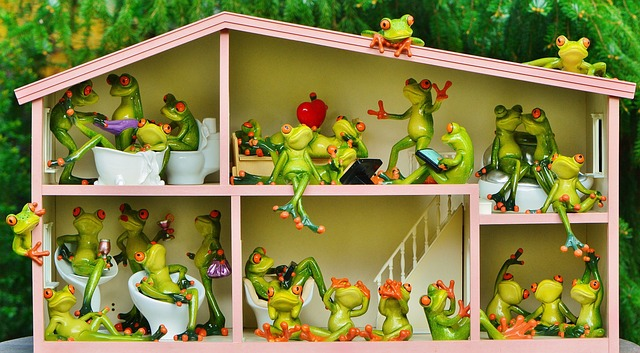
What is Green Living?
Green living is a lifestyle that aims to create balance in conserving and protecting Earth’s natural resources, habitats, human civilization and biodiversity. It involves making choices that reduce our impact on the environment and promote sustainability.
There are many different ways to live green. Some common green living practices include:
- Reducing energy consumption: Use of energy efficient appliances, turn off lights when leaving a room, unplugging electronics when they’re not in use, and weatherizing your home.
- Conserving water: This can be done by taking shorter showers, fixing leaky faucets, and watering your lawn less often.
- Recycling and composting: Recycling helps to reduce waste and conserve resources. Reduce methane emmissions by composting instead dumping in landfills, with the benefit of creating a nutrient-rich garden soil.
- Using sustainable transportation: This can include walking, biking, taking public transportation, or driving a fuel-efficient car.
- Eating a sustainable diet: This means eating less meat, more plant-based foods, and locally grown food whenever possible.
- Supporting green businesses: When you shop, choose businesses that are committed to sustainability.
Green living can be done on a small or large scale. Even small changes can make a big difference. By living green, we can all help to protect our planet for future generations.
Here are some additional benefits of green living:
- Reduced pollution: Green living practices can help reduce air pollution, water pollution, and soil pollution.
- Improved health: Living in a cleaner environment can lead to improved health outcomes.
- Stronger communities: Green living can help to build stronger communities by promoting cooperation and shared values.
- A more sustainable future: Green living can help to create a more sustainable future for all.
If you’re interested in living greener, there are many resources available to help you get started. There are books, websites, and even green living coaches who can provide guidance and support.
What is the difference between green living and a sustainable lifestyle?
Green living is a sustainable lifestyle that aims to reduce your impact on the environment. It includes things like recycling, using energy-efficient appliances, and driving a hybrid car. Sustainable lifestyle is a broader term that includes green living, but also considers other aspects of your life, such as your diet, your work, and your relationships.



